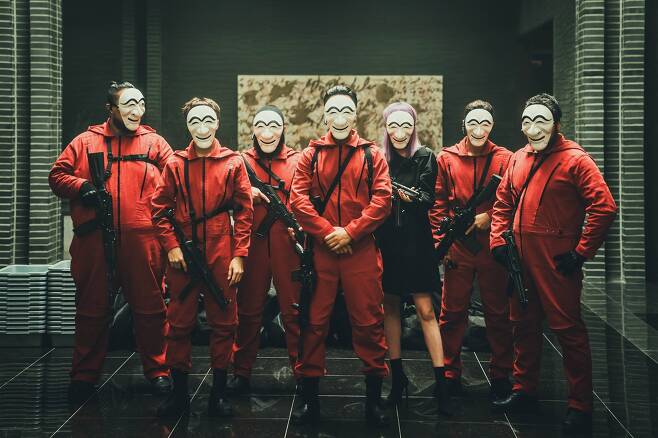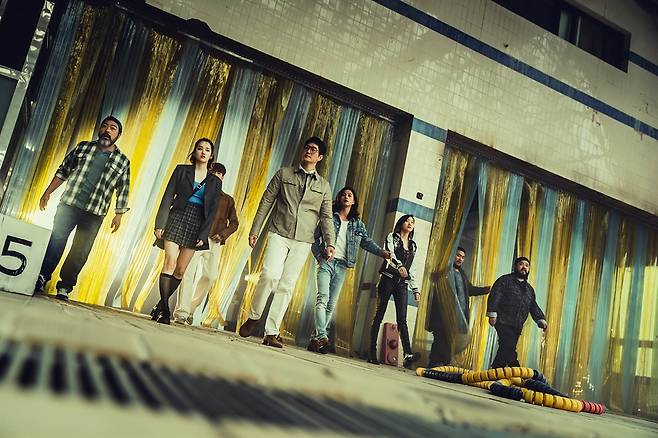


The House of Paper: Joint Economic Zone, released on Netflix, is set in Korean Peninsula, which is about to unify in 2026. The two Koreas have set up a unified Royal Canadian Mint that creates a virtual joint economic zone and creates a common currency, and the genius and ingenious idea of robbing 4 trillion won of the hostage robbers who have infiltrated it is the main story.
When Korea remade the Spanish original "The House of Paper", which ranked second in Netflix popularity, cheers and concerns continued. The historical background of Spain, which had suffered civil war like the Korean Peninsula, was a part of the cheers; a meaningful attempt to turn the mask, a symbol of resistance, into a humorous hahoe mask was outstanding.
The setting of capturing the Royal Canadian Mint and taking the fourth group in the confused situation of Korean Peninsula seemed clever. It was an interesting element to adapt it as a story of Korea Gao Rou while saving the original Gao Rou area.
The unique setting that only Korea can do was not having a great effect. Berlin, which uses North Korean dialects, and Denver, which uses Gyeongsang dialects, are very heterogeneous. The Character, named after the city, seemed to have been revised in a way that was generally toned down and not splashed; a narrative that provokes doubts and conflicts between the two Koreas and eventually harmonizes is expected.
I was also interested in watching the actors' awkward dialogue and vocalization as English and Japanese dubbing, which hindered their immersion. The dream team was a group of actors who showed the best performances in their respective areas, but they could not erase the feeling of playing separately.
It is a ridiculous but it only changes a little setting, but it follows an episode that does not undermine the original work at all. It’s as if the remake contract requires the original to be based on the original, and as a result, the person who saw the original has become a boring series.
The design of the Royal Canadian Mint was both lush and charming, as if it were inside the National Museum of Korea, and it was filled with sophisticated and Korean elements. The exterior is hanok but modern. It is filled with tile roofs, and the interior is filled with mother-of-pearl, landscape painting, white porcelain, and the patterns are traditional and old-fashioned.
In addition, the street atmosphere, which is a mixture of background music with gong, gong, flute, and janggu, and culture of South and North Korea, attracts attention.
It is a work that reveals the unremarkable Meru of the remake: the main conflicts inside and outside the Royal Canadian Mint are stacked on part 1. We have to see how we can solve this in Part 2, adding to the question of the code name "Seoul" that did not appear in the original work, and the Lisbon and Stockholm that appeared in the original work.